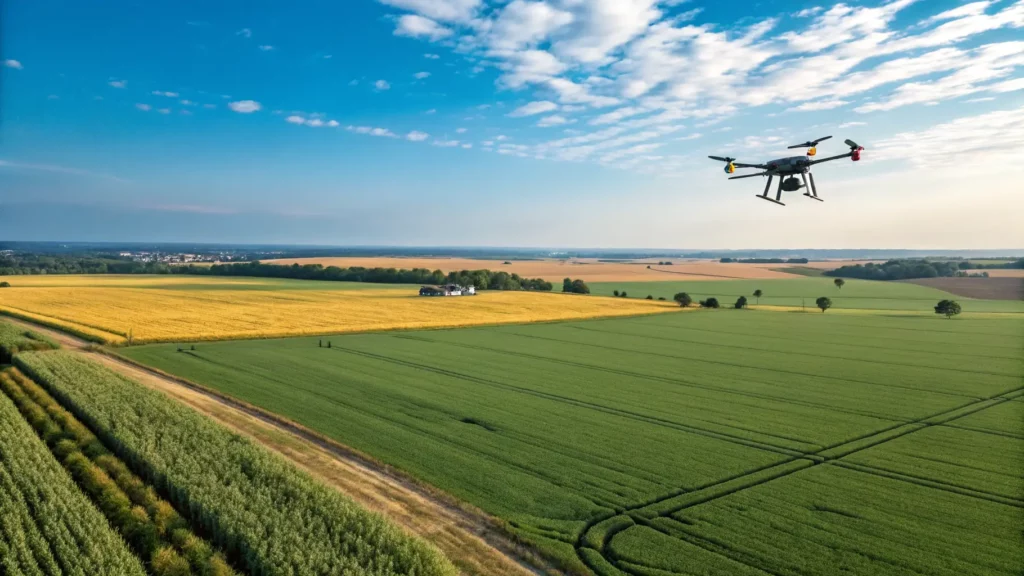When you think about getting your fields sprayed, you might picture a tractor or a bulky ground rig moving steadily across your paddocks. But today, more New Zealand farmers are looking skyward—exploring drone spraying as a modern alternative. If you’re curious about whether drone services make financial sense for you, it’s vital to understand what really goes into the cost of drone spraying, how it stacks up against traditional options, and why it can be a smart investment in the long run.
What Affects the Cost of Drone Spraying?
The price you pay for drone spraying in New Zealand isn’t set in stone. Several factors shape your final bill. Let’s break down what you need to consider when weighing up the cost.
Location and Terrain: Farms in rural or hard-to-reach areas may need extra travel or setup time for drone operators. However, drones have a definite edge on difficult ground—think steep slopes, boggy paddocks, or irregular fields—that would challenge ground machines or lead to missed patches.
Field Size and Layout: Most drone spraying providers have a minimum service fee that covers setup and flight planning. For larger properties or broadacre paddocks, the per-hectare cost can drop as the efficiencies increase. Smaller, fragmented fields may add to the time required, nudging up the price.
Crop Type and Height: Different crops (from pasture to canopy crops) need different strategies. Higher crops, thick orchards, or multi-layered cover can affect flight time or chemical volumes, potentially altering the price.
Chemical Type and Mix: Are you looking for a targeted herbicide application, broadacre fertiliser spraying, or a highly regulated insecticide? Each chemical has its own loading, mixing, and application standards; this affects both turnaround time and cost of materials used.
Regulatory Compliance: Every drone spraying operator has to meet strict Civil Aviation Authority (CAA) and WorkSafe requirements. This means using certified pilots, up-to-date maintenance, and robust safety practices —all added layers to keep your property (and the environment) safe.
So, what does this mean in practical numbers? On average, drone spraying in New Zealand typically ranges between $40 and $150 per hectare, depending on the above variables. Minimum fees may start around $250 to $350 to cover setup for smaller jobs. If your project requires specialty chemicals or detailed precision work, expect the upper end of the range.
How Do Providers Set Their Rates?
You might be wondering, “How do drone companies decide what to charge?” A common model includes covering:
- Pilot time and travel to your site
- Pre-flight planning and compliance work (including weather monitoring and safety checks)
- Equipment use (battery swaps, drone maintenance, and backups)
- Chemical sourcing, loading, and data management for precision application
Some providers, like SkySeed Drones, price by the hectare for straightforward spraying jobs, and may offer custom quotes for targeted tasks in tricky terrain or specialty crops.
Drone Spraying vs Traditional Ground Spraying: The Real Comparison
When comparing drone spraying prices to traditional ground rigs, don’t just look at the per-hectare number. Ground rig spraying might sometimes seem cheaper upfront, often sitting between $20 and $60 per hectare—but that’s not the whole story.
Soil Compaction Savings: Heavy ground machinery compacts the soil, reducing future yields and increasing your need for deep-ripping or soil health amendments.
Reduced Overlap and Waste: Drones use precise GPS-guided technology, which means less chemical drift and overlap. That gives you input savings—not just cost savings on the application, but lower spend on chemicals too.
Access All Areas: Drones handle wet soil, muddy gateways, and steep hills where tractors can’t go. That means no missed patches or ruts.
Faster Turnaround: When weather turns wet or you need a job done promptly, drones can get in and out between rain showers—minimising your window of crop vulnerability.
Over time, investing in precision drone spraying often means better yields, fewer inputs wasted, and less remedial work. Many NZ growers find the real savings add up over the season, offsetting the initial price difference.
Is Drone Spraying Really Profitable?
The short answer: yes, drone spraying can deliver real returns, especially for those focused on efficiency and long-term sustainability.
Precision means you only spray where needed, saving on products and reducing environmental impact. You avoid the costs (and headaches) of soil compaction or damaged headlands. If your farm has hard-to-reach corners or sensitive areas, the ability to target applications without disturbing the ground pays for itself over time. Plus, keeping your chemical applications compliant and environmentally responsible helps future-proof your business.
Many local growers using agriculture drone spraying NZ report reduced input costs, improved coverage, and better pasture or crop response. If you run a property in Rotorua or Bay of Plenty, advanced services like gps-guided drone spraying in rotorua offer both accuracy and flexibility—tailored to your landscape and crop type.
The Bottom Line
Drone spraying in New Zealand is more than just a high-tech upgrade. When you add up the true costs and benefits—input savings, timeliness, soil protection, and compliance—drones often prove to be the better investment.
Prices vary based on your property, crop, and the service level you need, but a transparent provider will always walk you through the numbers.
For landowners ready to trial drone technology or curious about whether a drone crop sprayer in rotorua makes sense for your farm, understanding the real cost is an important first step. Reach out and ask for a tailored quote. Every dollar spent wisely now can pay back with healthier crops, improved efficiency, and a more sustainable farming operation for years to come.
For some further insight into Drone spraying in Pastures, have a look at the DJI Case studies here
